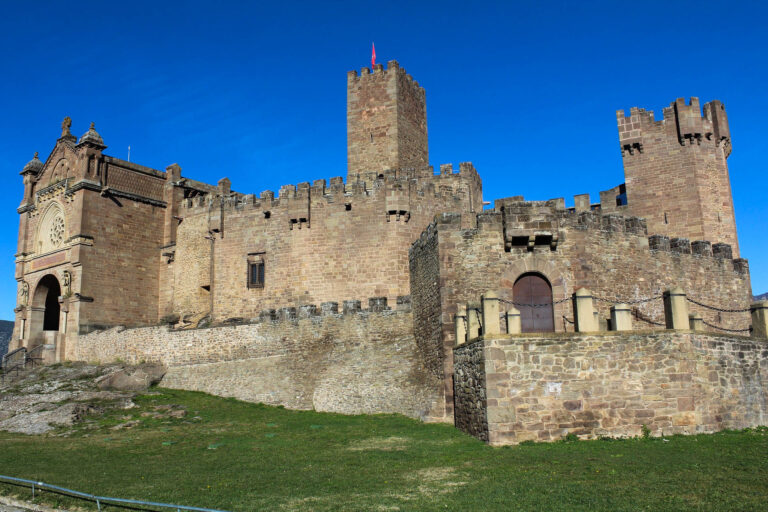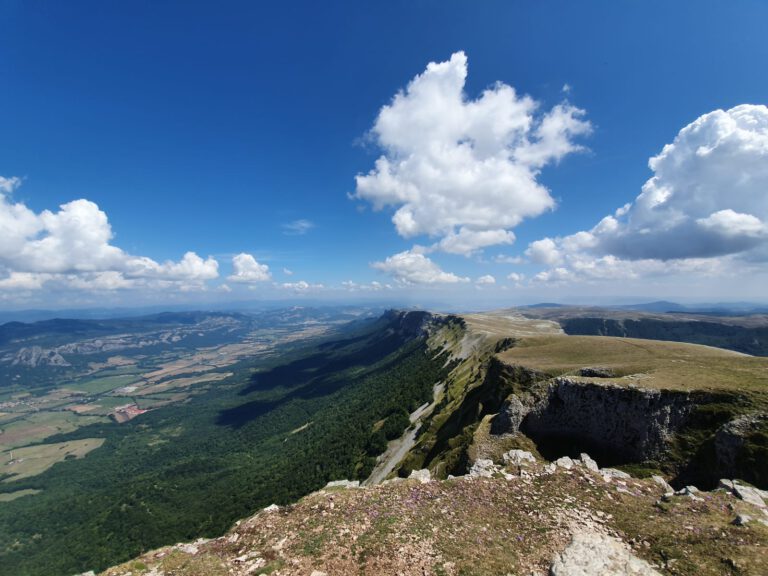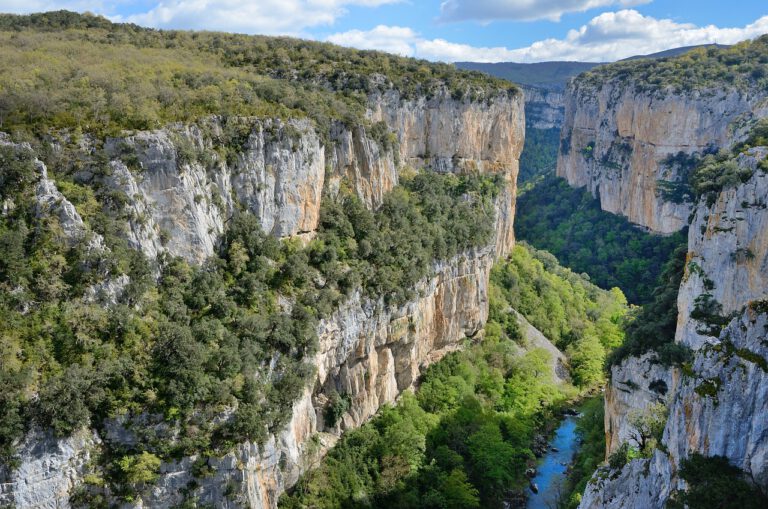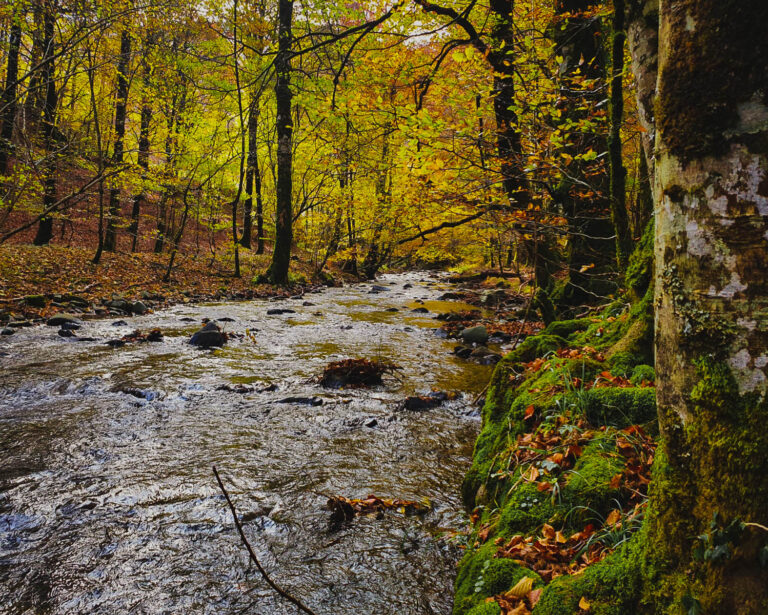Navarre is a region with a rich and fascinating history, from which numerous traditions have emerged that are still alive and proudly celebrated by the locals. Below you will find an extensive list of the most well-known and beloved Navarrese traditions:
1. City and village festivals (San Fermín)
Every city and town in Navarre celebrates its own festivals during the summer period, with the most famous being San Fermín, in the capital Pamplona. In all city and village festivals in Navarre, the tradition is to wear white clothing with red accessories.
The San Fermín festivals, also known as the Sanfermines, are an annual event held in Pamplona. These festivities are held in honor of San Fermín (Saint Firmin of Amiens), one of the two patron saints of Navarre. The festival takes place every year from July 6 to 14 and attracts over 1,000,000 visitors from around the world, being especially famous for the encierros (“running of the bulls”).
The rest of the cities and towns also have their own festivals, which are a smaller version of the Sanfermines. There are often encierros and many fun activities, such as concerts, rides, drinks, and street music.
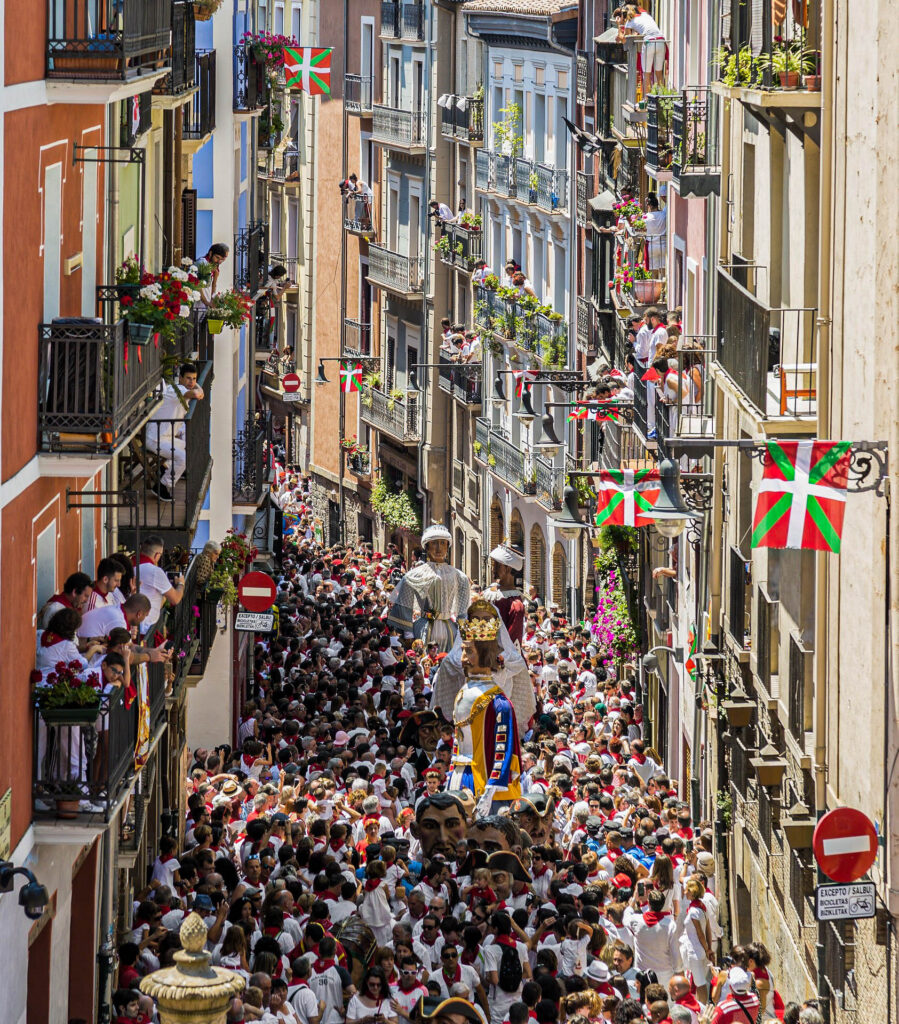
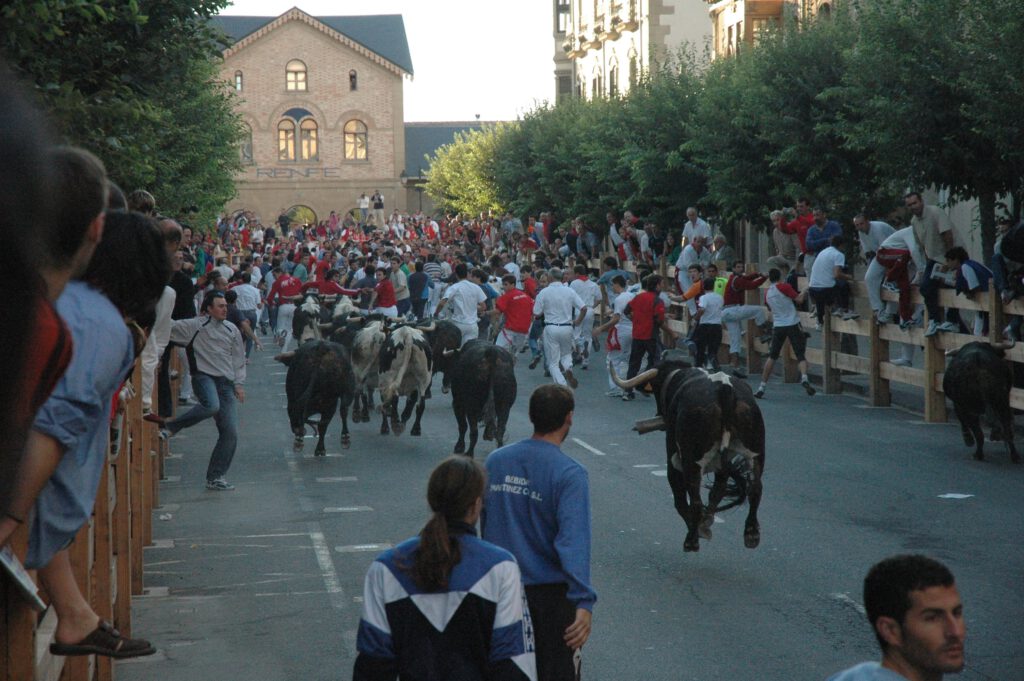
2. Pilgrimages
In Navarre, several pilgrimages take place every year. Two of the most well-known are the pilgrimage to Ujué and Javier.
Thousands of people walk from various nearby villages to Ujué, some of which are over 25 kilometers away. This tradition has been taking place since the year 1043, usually at the end of April or the beginning of May. The pilgrims wear black robes, cover their faces with a hood of the same color, and often carry Christian crosses.
Since the prayers to San Francisco Javier ("Saint Francis Xavier") helped overcome a cholera epidemic in Navarre in 1886, annual pilgrimages to Javier are held by thousands of people from all over Navarre. These are usually held during the first two weekends of March and are also known as Javieradas. During the Javieradas, people wear regular clothing, unlike the romería ("pilgrimage") to Ujué.
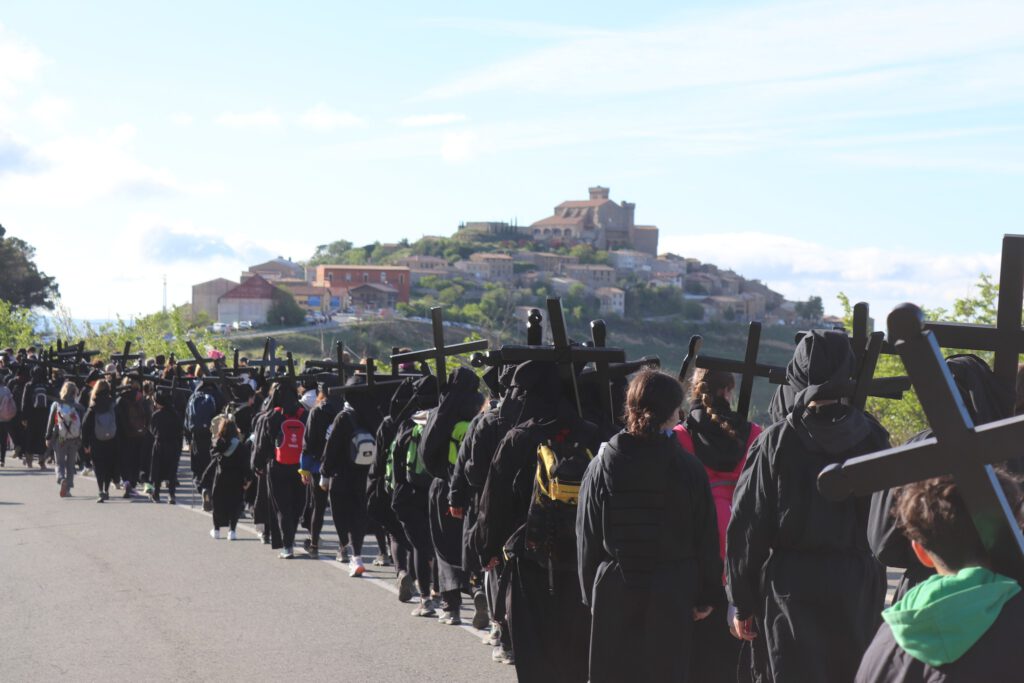
3. Holy Week
During Semana Santa ("Holy Week"), several processions are held in Navarre, where a group of bearers typically carries a statue of Christ and/or the Virgin Mary through the streets of their town or city. However, this takes place on a much larger scale in southern Spain. Nevertheless, it is a tradition that many people in Navarre look forward to.
4. Medieval days of Olite and Artajona
During the second weekend of August, the Medieval Festival takes place in Olite, where the town steps back in time to the Middle Ages. Numerous activities, musical performances, and shows take place, along with a medieval market. Additionally, many people dress in various types of medieval clothing.
Additionally, Artajona organizes an event at the end of August that also takes the town back to the Middle Ages. The locals also dress in clothing from that medieval period. During this event, there are various activities to enjoy. Visitors can, for example, taste typical Navarrese products at the craft markets. There are also falconry shows, a demonstration of knights on horseback carrying medieval lances, and several guided tours.
5. Three Kings and Olentzero
The Reyes Magos ("The Three Kings") are to Spanish children what Santa Claus is to others. The Reyes Magos are celebrated by almost all families in Spain, where children receive presents. A tradition is that children who have misbehaved during the year receive coal as a punishment. However, they often receive edible (candy) coal as a joke. On January 5th, parades with floats are held in almost every town or city, and when children wake up in the morning, they often find many presents under the Christmas tree.
Also, the Olentzero (originally from the Basque Country) is celebrated by some people in Navarra. These are usually those who feel Basque or have a connection to the Basque Country. A parade is also held, where the Olentzero, who is a kind of Basque Santa Claus, is carried by a group of people on December 24th.
6. Jotas
The jotas navarras are a traditional music style sung during Navarrese festivities. They are part of the broader jota tradition found in various parts of Spain, including Aragón, La Rioja, and Valencia.
Singing is an important part and is often characterized by energetic, emotional, and sometimes improvised lyrics. Singers often have powerful voices and sing with a lot of expression. The singing is often accompanied by instruments such as guitars, bandurrias (a Spanish string instrument), lutes, and sometimes accordions.
In addition, they wear white clothing with red accessories, which is typical for the village festivals in Navarra and the San Fermín festivities in Pamplona.
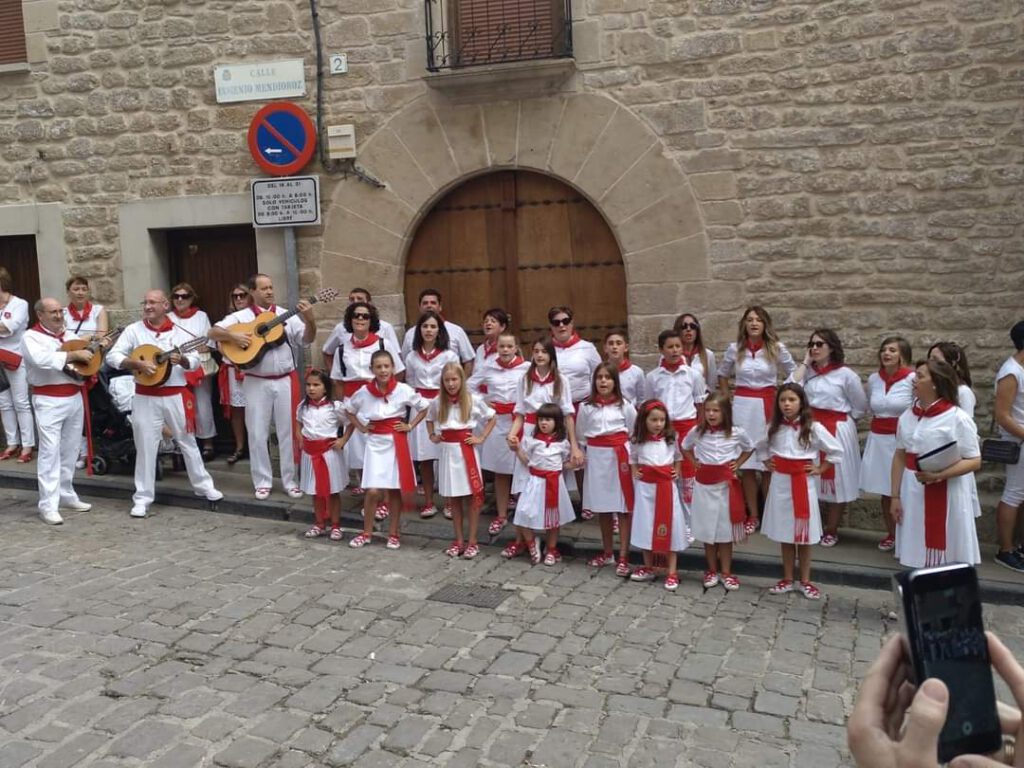
7. Carnival
A tradition in Navarra is, like in many places around the world, the annual celebration of carnival. However, in some places in Navarra, it is celebrated in a special way.
In the village of Lantz, a village between Pamplona and Elizondo, there is the tradition that on the night before Ash Wednesday, the entire village dresses up as various mythical characters, with the aim of capturing the bandit Miel Otxin, who represents the evil spirits. Some inhabitants wear sacks filled with hay, while others wear colorful clothing and straw hats.

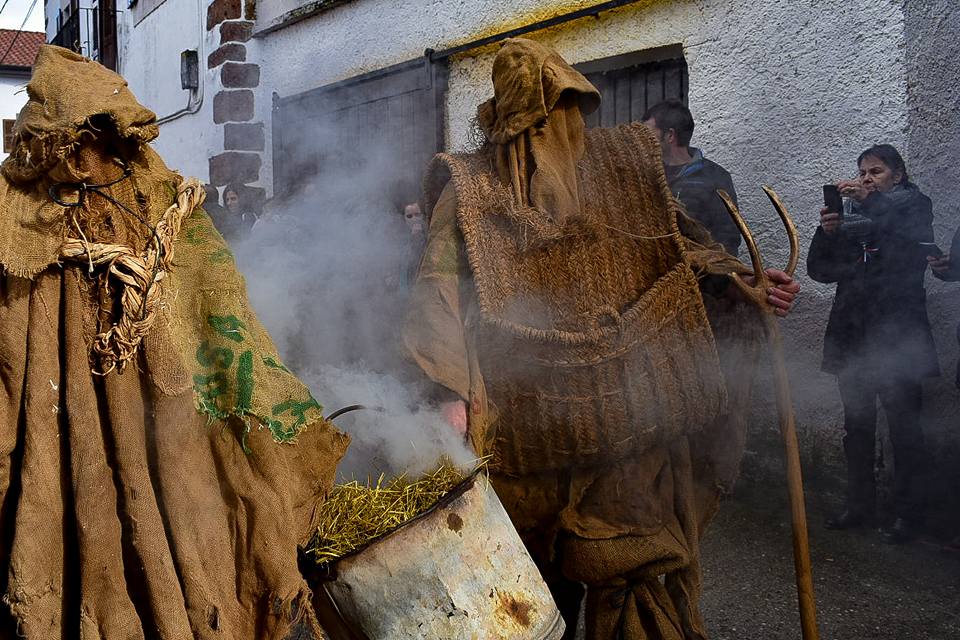
In the villages of Ituren and Zubieta, a special carnival is also celebrated in the last week of January. Here, people dress up as Joaldunak (also known as Zanpantzar). The costume consists of a colorful, pointed hat, a woolen garment, and two cowbells on the back. The Joaldunak jump as they walk through the streets, creating a rhythmic sound with the cowbells.
In the village of Alsasua, people dress up as Momotxorro. The costume consists of a cow’s head with two horns, a white apron with “blood,” blue trousers, and a pitchfork.

